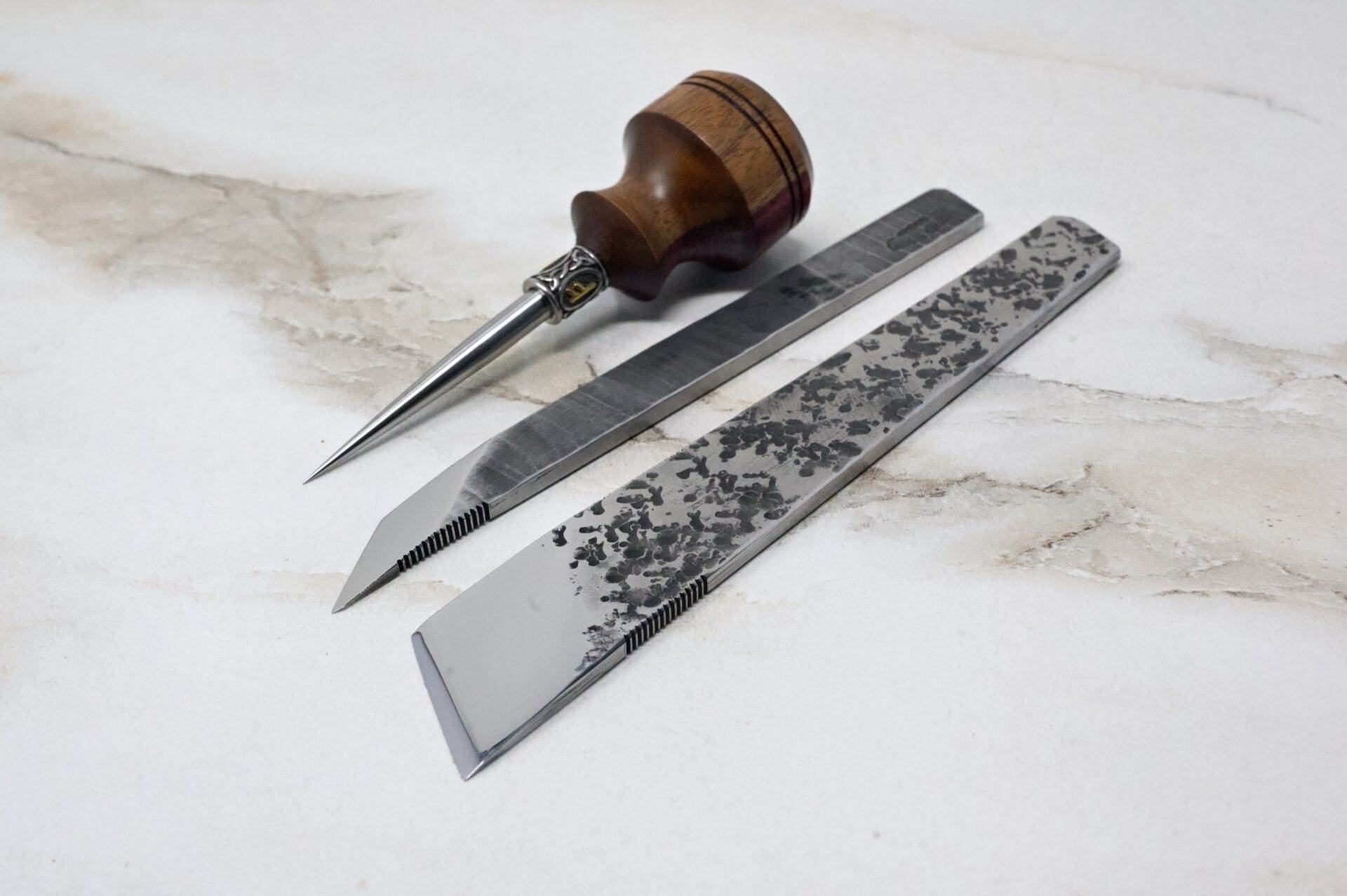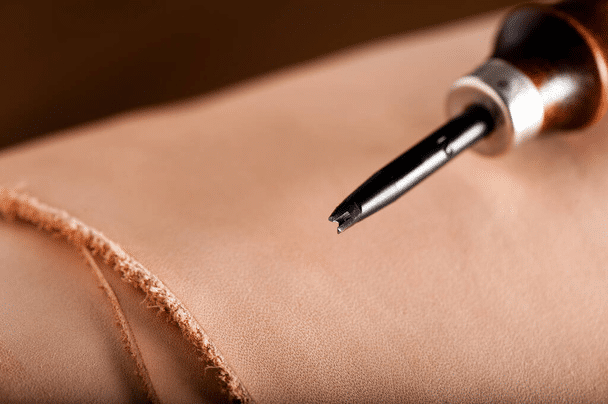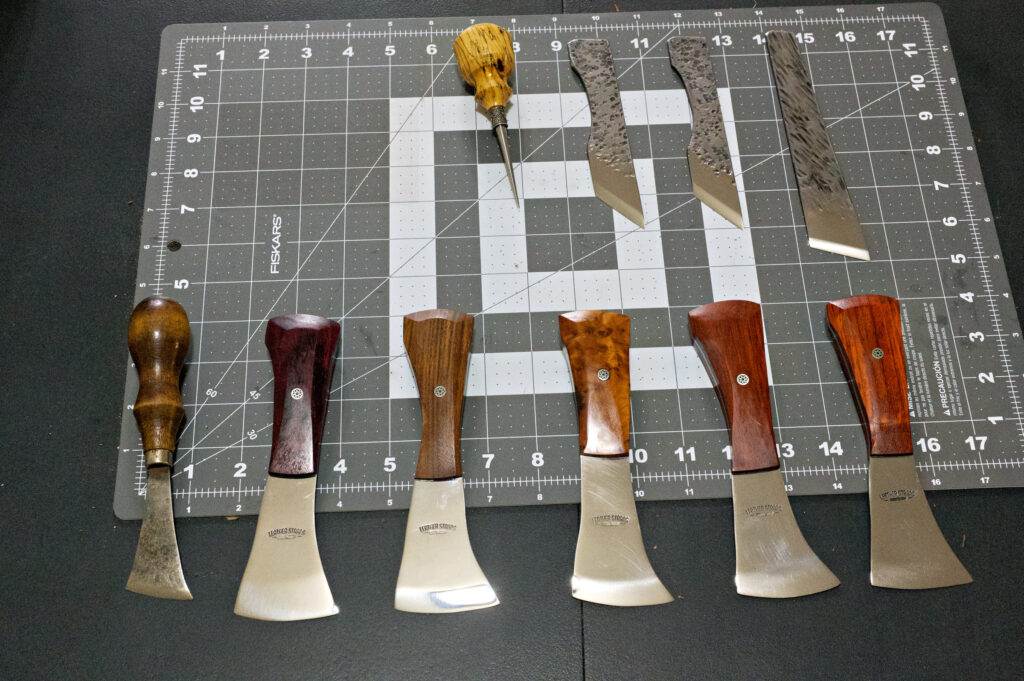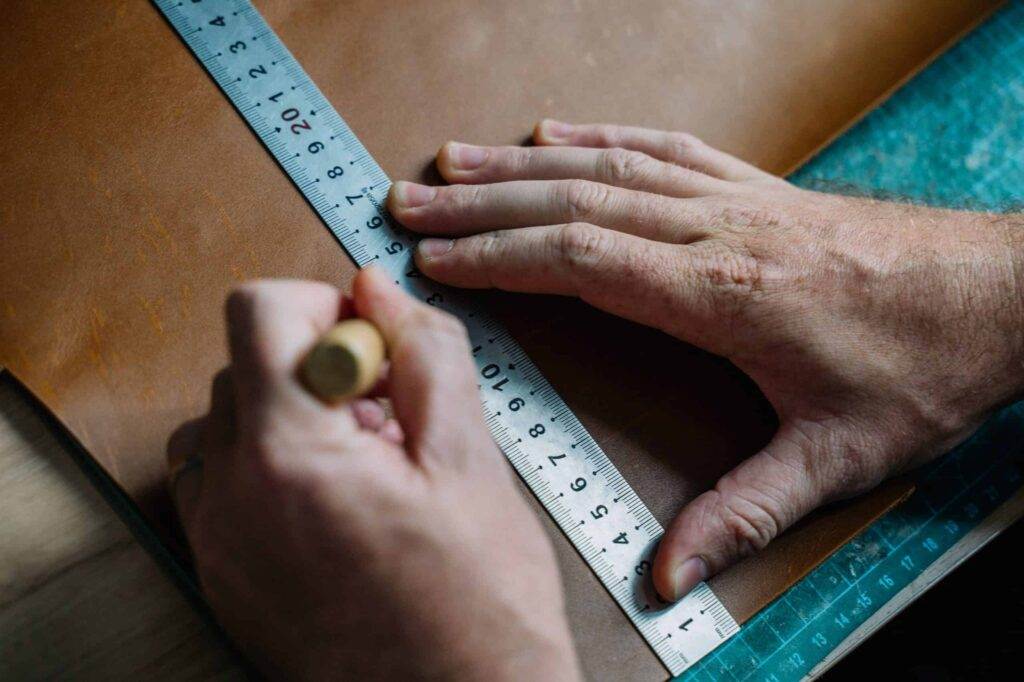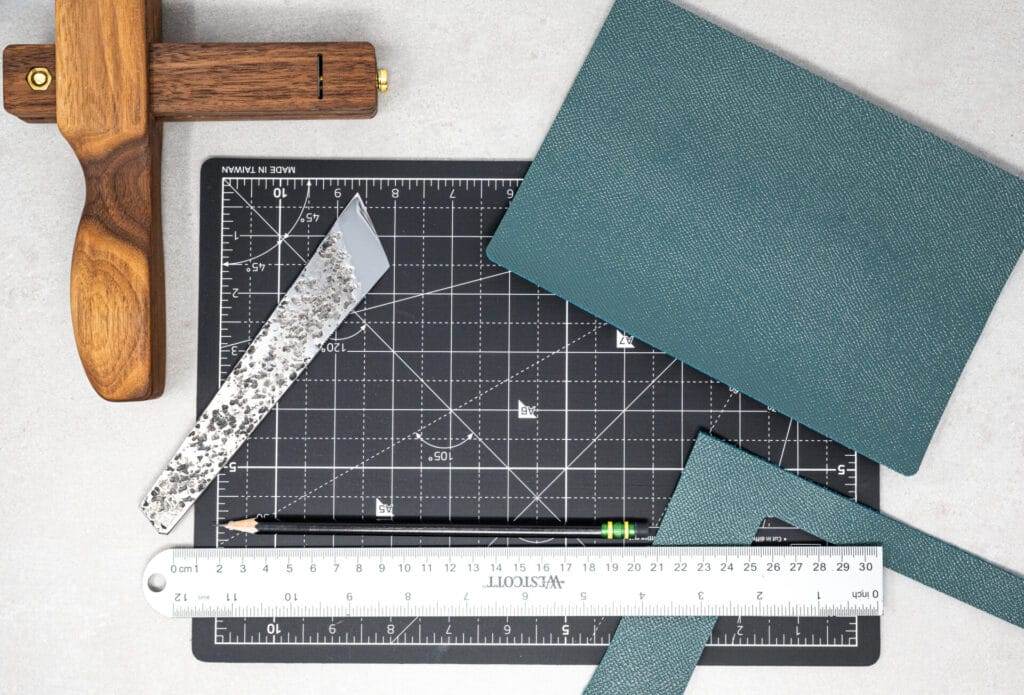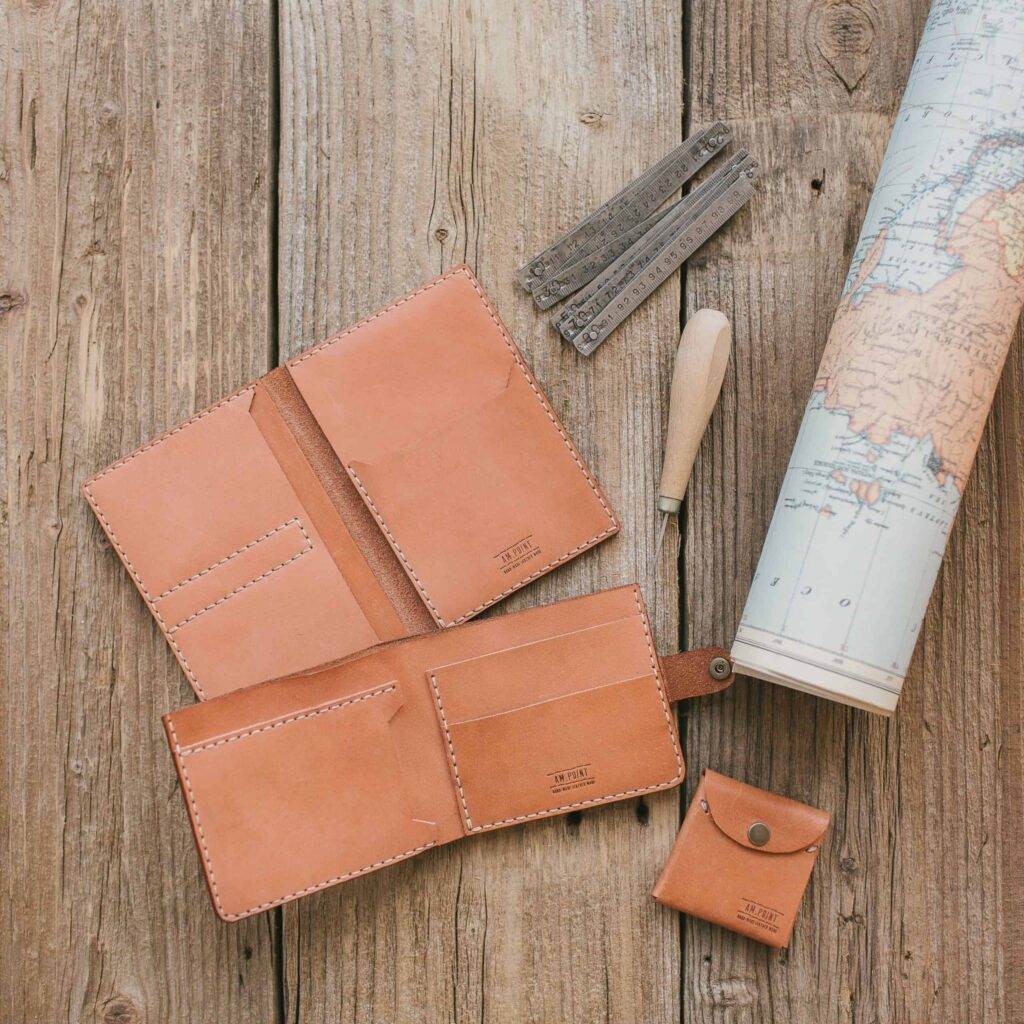Understanding Different Types of Leathercraft Cutting Tools
Leathercraft is a time-honored art that combines creativity with precision, and at the heart of this craft lies the essential category of cutting tools. These tools are not merely accessories; they are the instruments that allow artisans to transform raw leather into beautifully crafted items. Whether you are a novice or an experienced leatherworker, understanding the various cutting tools available is crucial for achieving clean, accurate cuts that enhance the overall quality of your projects.
The right cutting tool can make a significant difference in the ease of your work and the final appearance of your leather goods. The world of leathercraft cutting tools is diverse, encompassing a range of implements designed for specific tasks. From simple knives to intricate specialty tools, each has its unique purpose and application.
As you delve deeper into leathercraft, you will discover that selecting the appropriate tool for your project can elevate your craftsmanship and streamline your workflow. This article will explore the various types of leather cutting tools, their specific uses, and how to choose and maintain them effectively.
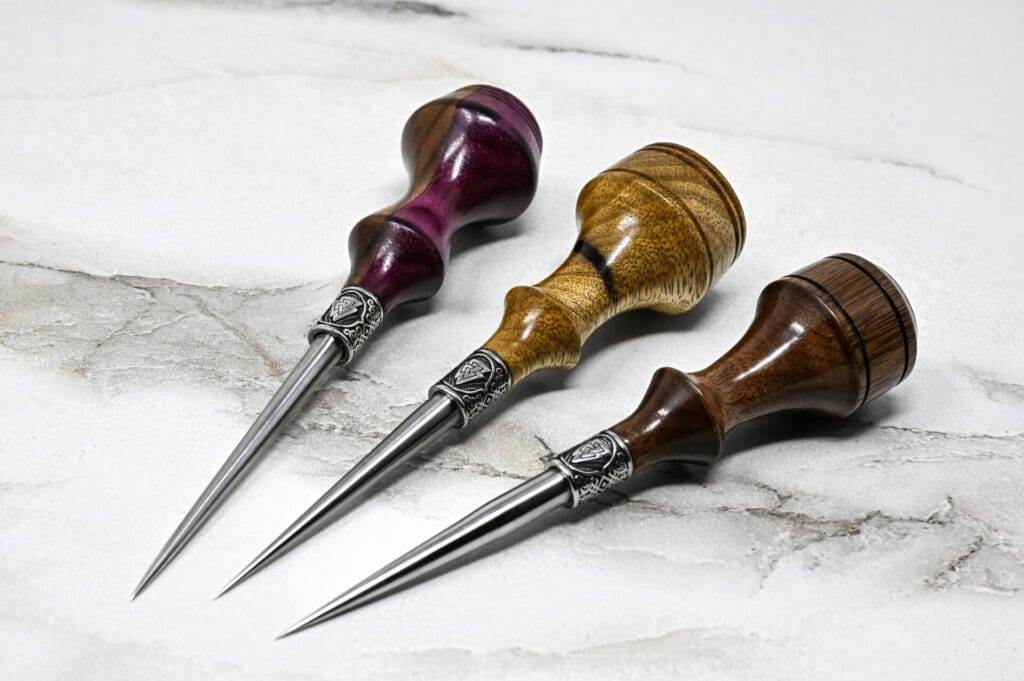
Key Takeaways
- Leathercraft cutting tools are essential for creating precise and clean cuts in leather for various projects.
- Basic types of leather cutting tools include utility knives, rotary cutters, and leather shears, each with its own advantages and uses.
- Understanding the differences between straight and curved blades can help you choose the right tool for different cutting needs in leathercraft.
- Specialty leather cutting tools such as skivers, strap cutters, and hole punches can add versatility and precision to your leathercraft projects.
- Choosing the right cutting tool for your leathercraft project involves considering the type of leather, thickness, and the specific cuts needed for the project.
Basic Types of Leather Cutting Tools
When embarking on a leathercraft project, it is essential to familiarize yourself with the basic types of cutting tools available. The most common tool is the utility knife, which features a retractable blade that can be easily replaced when dull. This versatile tool is ideal for making straight cuts and can handle various thicknesses of leather.
Its portability and ease of use make it a staple in any leatherworker’s toolkit. Another fundamental tool is the rotary cutter, which consists of a circular blade mounted on a handle. This tool excels at making long, continuous cuts and is particularly useful for cutting multiple layers of leather at once.
The rotary cutter is favored for its ability to produce clean edges without the risk of tearing or fraying the material. Additionally, there are specialized knives such as the round knife and the strap cutter, each designed for specific cutting tasks. Understanding these basic tools will provide a solid foundation for any leathercraft endeavor.
Understanding the Differences Between Straight and Curved Blades
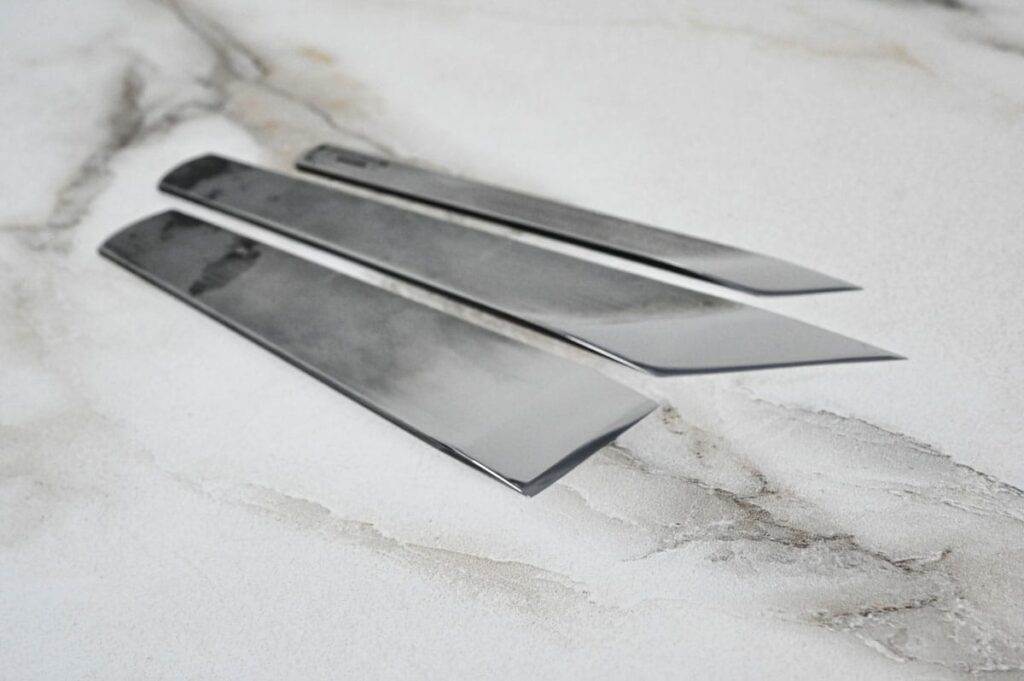
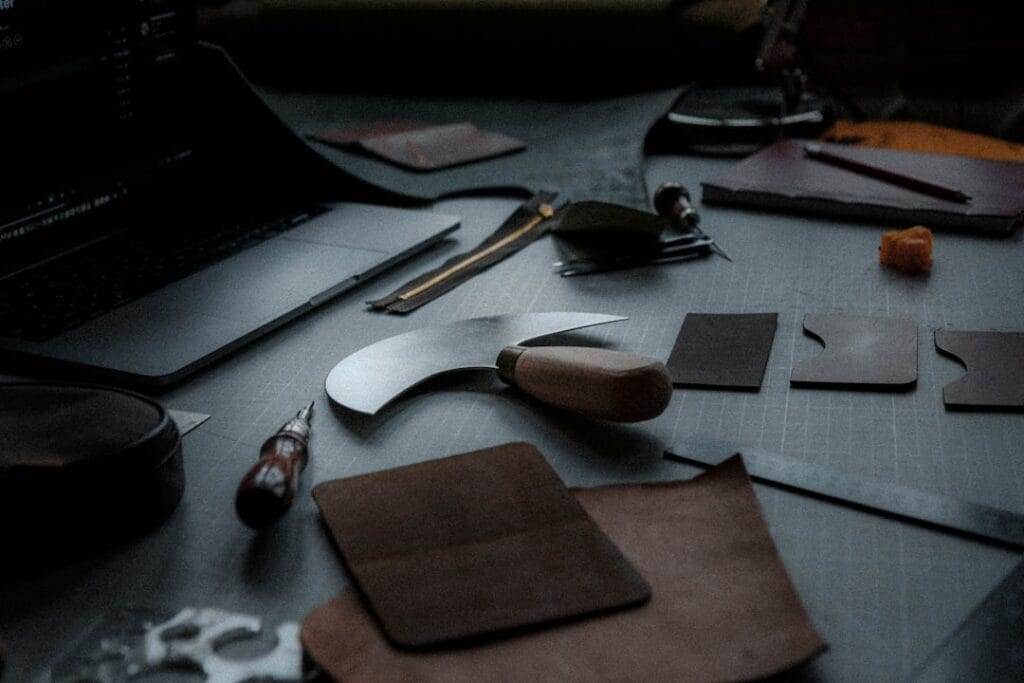
One of the critical distinctions in leather cutting tools is between straight and curved blades. Straight blades are typically used for making precise cuts along straight lines or for trimming edges. They offer excellent control and are ideal for tasks that require accuracy, such as cutting out patterns or shaping leather pieces.
The design of straight blades allows for a clean cut, minimizing the risk of damaging the material. Conversely, curved blades are designed for more intricate work, allowing artisans to navigate around corners and curves with ease. These blades are particularly useful when working on projects that require detailed designs or when cutting out shapes that are not linear.
The curvature of the blade enables smoother transitions and reduces the likelihood of jagged edges. Understanding when to use each type of blade can significantly impact the quality of your work and the efficiency of your cutting process.
Exploring Specialty Leather Cutting Tools
In addition to basic cutting tools, there exists a range of specialty leather cutting tools designed for specific applications within leathercraft. One such tool is the clicker knife, which is used primarily in industrial settings for cutting multiple layers of leather simultaneously. This tool features a unique design that allows for precise cuts while maintaining speed, making it invaluable for large-scale production.
Another specialty tool is the pricking iron, which not only cuts but also creates evenly spaced holes in leather for stitching. This tool is essential for ensuring that seams are aligned and consistent, contributing to both the aesthetic and structural integrity of the finished product. Additionally, there are tools like the edge beveler and skiving knife that serve specialized purposes in preparing edges and thinning leather, respectively.
Exploring these specialty tools can open up new possibilities in your leathercraft projects and enhance your overall skill set.
Choosing the Right Cutting Tool for Your Leathercraft Project
Selecting the right cutting tool for your leathercraft project involves considering several factors, including the type of leather you are working with, the complexity of your design, and your level of experience. For beginners, starting with basic tools such as utility knives and rotary cutters can provide a solid foundation while allowing room for growth as skills develop. As you gain confidence and experience, you may find it beneficial to invest in specialty tools that cater to more complex projects.
It is also essential to consider the thickness and type of leather you will be using. Thicker leathers may require more robust cutting tools, while thinner materials might be better suited to lighter implements. Additionally, if your project involves intricate designs or curves, opting for curved blades or specialty knives can help achieve cleaner results.
Ultimately, choosing the right tool is about finding a balance between functionality and comfort, ensuring that you can work efficiently while enjoying the creative process.
Proper Care and Maintenance of Leather Cutting Tools
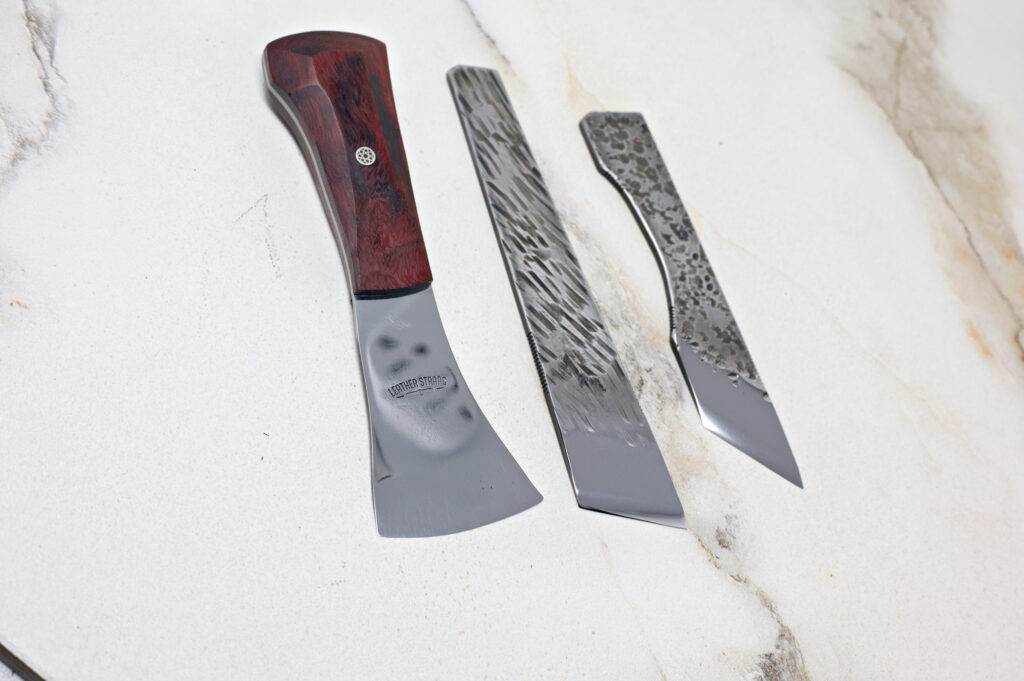
To ensure longevity and optimal performance, proper care and maintenance of leather cutting tools are paramount. Regularly cleaning your tools after each use helps prevent residue buildup that can affect their effectiveness. For knives and blades, wiping them down with a soft cloth can remove any leather particles or oils that may have accumulated during cutting.
Additionally, it is advisable to periodically sharpen blades to maintain their cutting edge; dull blades can lead to uneven cuts and increased effort during use. Storage also plays a crucial role in maintaining your cutting tools. Keeping them in a designated toolbox or sheath protects them from damage and prevents accidents when not in use.
For those who own multiple tools, organizing them by type or size can streamline your workflow and make it easier to find the right implement when needed. By investing time in caring for your tools, you will ensure they remain reliable companions throughout your leathercraft journey.
Safety Tips for Using Leathercraft Cutting Tools
Safety should always be a priority when working with cutting tools in leathercraft. One fundamental safety tip is to always cut away from your body to minimize the risk of injury in case of slips or accidents. Additionally, using a self-healing cutting mat can provide a protective surface that absorbs cuts and prevents damage to your work area while also safeguarding your blades.
Wearing appropriate personal protective equipment (PPE) is also advisable when using sharp tools. Cut-resistant gloves can provide an extra layer of protection against accidental cuts while still allowing for dexterity during intricate tasks. Furthermore, ensuring that your workspace is well-lit can help improve visibility and reduce the likelihood of mistakes caused by poor lighting conditions.
By adhering to these safety tips, you can create a secure environment that fosters creativity without compromising well-being.
Advanced Techniques and Tips for Using Leather Cutting Tools
As you become more proficient in leathercraft, exploring advanced techniques with your cutting tools can elevate your work to new heights. One such technique involves mastering the art of scoring leather before making cuts. Scoring creates a shallow groove along your intended cut line, providing guidance for more precise cuts while reducing the risk of tearing or fraying edges.
Another advanced technique is learning how to manipulate blade angles during cuts. Adjusting the angle at which you hold your knife can significantly impact the quality of your cuts; a steeper angle may yield cleaner edges on thicker materials, while a shallower angle may be more suitable for delicate work. Experimenting with different techniques will not only enhance your skills but also allow you to develop a personal style that reflects your artistic vision.
In conclusion, understanding leathercraft cutting tools is essential for anyone looking to excel in this intricate craft. From basic utility knives to specialized implements, each tool serves a unique purpose that contributes to the overall quality of your work. By choosing the right tools, maintaining them properly, prioritizing safety, and exploring advanced techniques, you can unlock new levels of creativity and craftsmanship in your leather projects.
Whether you are crafting simple items or intricate designs, mastering these tools will empower you to bring your artistic visions to life with precision and confidence.
FAQs
What are the different types of leathercraft cutting tools?
There are several types of leathercraft cutting tools, including utility knives, rotary cutters, strap cutters, skiving knives, and leather shears.
What is a utility knife and how is it used in leathercraft?
A utility knife is a versatile cutting tool with a retractable blade that is commonly used in leathercraft for cutting straight lines and making precise cuts.
What is a rotary cutter and how is it used in leathercraft?
A rotary cutter is a tool with a circular blade that is used for cutting curves and intricate patterns in leather.
What is a strap cutter and how is it used in leathercraft?
A strap cutter is a tool used to cut leather straps and strips to a consistent width, making it ideal for creating belts, handles, and other leather accessories.
What is a skiving knife and how is it used in leathercraft?
A skiving knife is used to thin out the edges of leather, creating a smooth and even surface for stitching and finishing.
What are leather shears and how are they used in leathercraft?
Leather shears are heavy-duty scissors designed specifically for cutting leather. They are used for cutting larger pieces of leather and for trimming edges.

